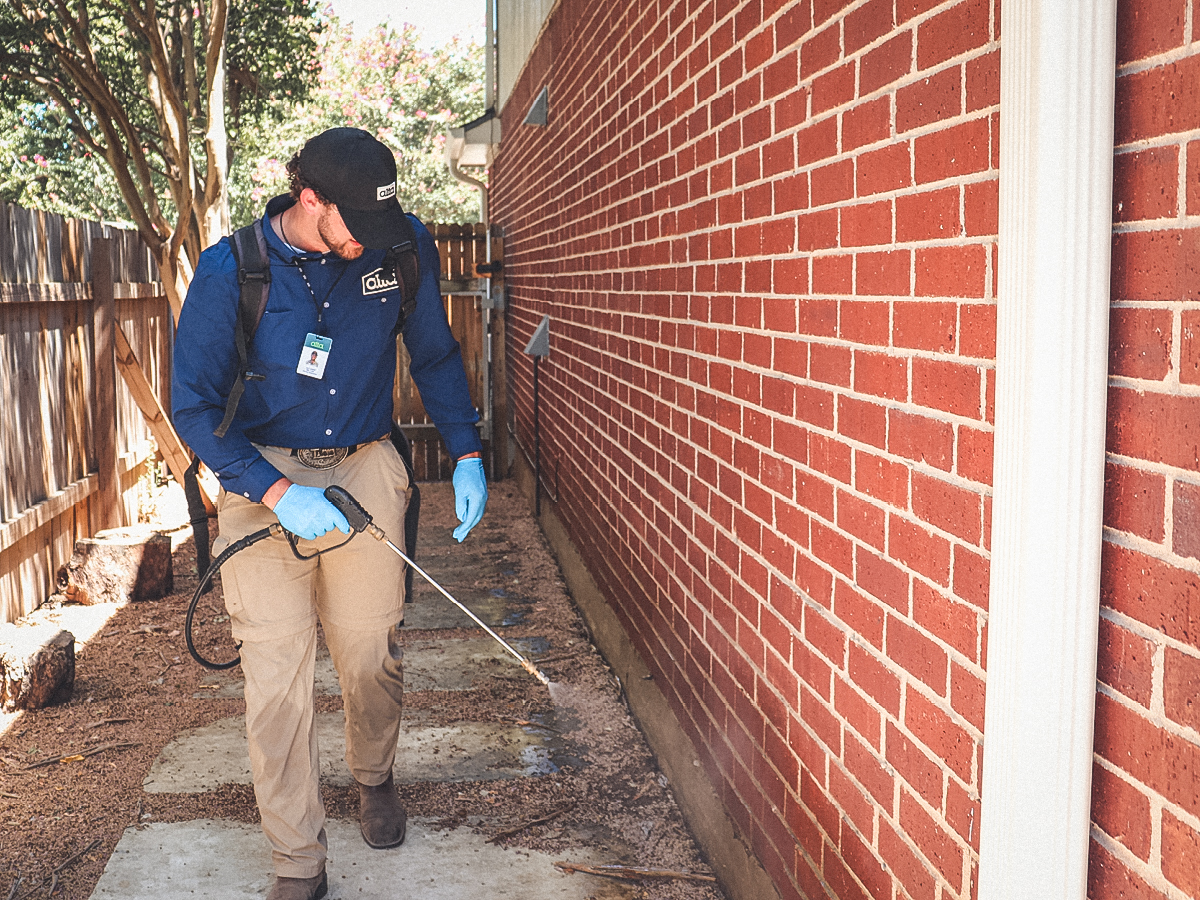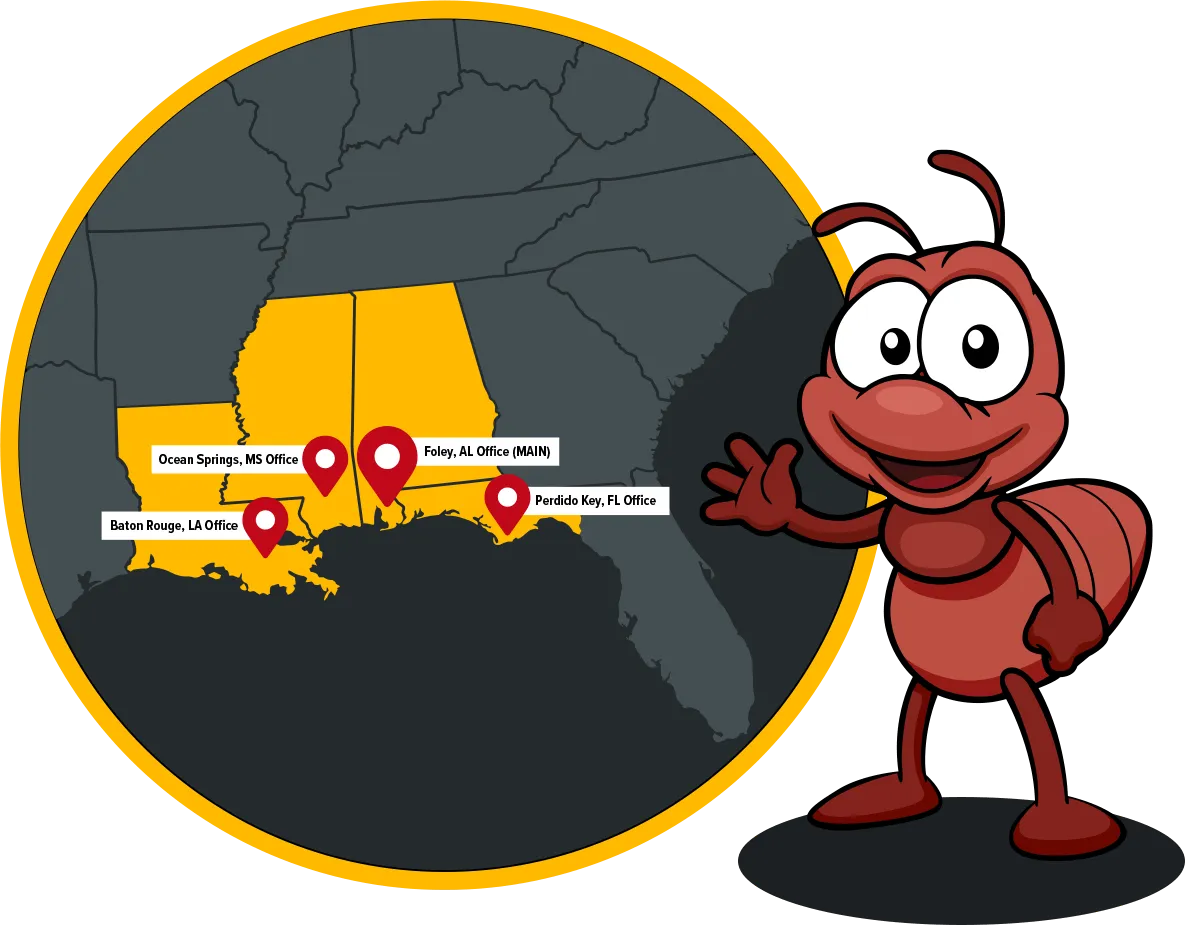Top Benefits of Termite Treatment Port Charlotte for Proactive Protection
Top Benefits of Termite Treatment Port Charlotte for Proactive Protection
Blog Article
Uncover the Relevance of Insect Control in Preserving a Healthy Environment and Treatment Techniques

The Duty of Bugs in Ecosystems
Bugs, frequently watched solely as hassles, play a multifaceted function in ecosystems that is essential for maintaining environmental equilibrium. They contribute dramatically to different environmental procedures, including pollination, vitamins and mineral cycling, and bug control. For instance, numerous insect varieties, such as and butterflies, are necessary pollinators for a variety of plants, which in turn sustains biodiversity and food manufacturing.
Additionally, insects function as victim for numerous killers, creating an essential link in food webs. This interdependence makes sure the survival of different varieties and helps manage populations within environments (Termite treatment Port Charlotte). Decomposer bugs, such as specific beetles and fungis, are critical in damaging down natural issue, therefore enhancing dirt and promoting vitamins and mineral recycling.
Conversely, while pests can be advantageous, their overpopulation or invasion right into non-native settings might interrupt these environmental functions. This complexity underscores the relevance of recognizing bug dynamics, as effective pest monitoring strategies must take into consideration both their eco-friendly functions and potential effect on human tasks. Balancing pest presence while minimizing injury is crucial for protecting the stability of ecosystems and making certain farming productivity.
Wellness Threats Connected With Insects
The visibility of insects in various settings extends past their environmental roles, as they additionally present significant wellness dangers to animals and human beings. Numerous pests, including bugs, bloodsuckers, and rodents, are service providers of illness that can have serious health and wellness implications. As an example, rats are understood to send hantavirus and leptospirosis, both of which can result in extreme breathing and kidney issues, respectively.
Insects such as ticks and insects are infamous for spreading vector-borne illness like jungle fever, dengue high temperature, and Lyme disease. These ailments can result in high morbidity and mortality rates, specifically in at risk populations. Furthermore, parasites like vermins and cockroaches can exacerbate allergies and asthma, adding to respiratory issues in people, particularly those with pre-existing problems.
In addition, the presence of pests can lead to mental stress and anxiety and pain, influencing overall well-being. Contamination of food and surfaces by pest droppings and remains can result in foodborne health problems, highlighting the importance of preserving sanitary conditions. Understanding the health and wellness risks associated with parasites is critical in identifying the requirement of effective pest management strategies to safeguard animal soil treatment for termite control and human health and wellness.

Benefits of Reliable Parasite Control
Efficient insect control is necessary for preserving a healthy and secure atmosphere, as it regularly mitigates the countless dangers associated with parasite invasions. One of the primary advantages of effective parasite administration is the reduction of wellness dangers.
Additionally, reliable insect control safeguards building and structures from damages. Numerous insects, like termites and woodworker ants, can cause extensive architectural damage that might require expensive repairs. By proactively taking care of these house owners, problems and companies can safeguard their financial investments.
Another substantial benefit is the improvement of total quality of life. A pest-free atmosphere adds to mental wellness and minimizes stress connected with invasions. Effective pest control fosters a safer atmosphere for animals and children, guaranteeing that homes remain havens totally free from disease-causing organisms and hazardous chemicals.
Common Insect Control Techniques

In the world of insect management, numerous techniques are used to deal with invasions efficiently. These techniques can be generally categorized right into 3 primary approaches: social, mechanical, and chemical controls.
Cultural control involves modifying methods to reduce pest reproduction, facility, and survival. This may consist of crop turning, proper sanitation, and environment manipulation, which jointly create an atmosphere much less for pest spreading.
Mechanical control uses physical methods to eliminate insects (Termite treatment Port Charlotte). Methods such as catches, obstacles, and vacuum cleaners are typically utilized to straight eliminate bugs from a location. This technique is specifically reliable for taking care of rats and bugs without using harmful chemicals
Chemical control involves the application of pesticides to manage parasites. These materials can be classified right into herbicides, fungicides, and pesticides, each targeting particular types of pests. It is essential to use these chemicals sensibly, adhering to safety and security standards and guidelines to minimize prospective harm to non-target types and the atmosphere.
Each insect control technique has its limitations and benefits, and usually, an incorporated technique integrating multiple approaches produces the most effective outcomes in preserving a pest-free environment.
Lasting Bug Management Practices
Lasting bug management practices incorporate a variety of techniques made to lessen environmental influence while efficiently managing bug populations. These practices focus on making use of environmentally pleasant approaches over chemical pesticides, consequently decreasing the threat of harm to non-target varieties, including beneficial bugs, wildlife, and people.
Integrated Pest Administration (IPM) is a keystone of sustainable techniques, combining biological, cultural, mechanical, and chemical methods to manage bugs. Organic control entails my website introducing natural killers browse around this web-site or bloodsuckers to suppress bug populations. Cultural methods, such as plant rotation and polyculture, interrupt pest life process and boost community strength.
Mechanical approaches, such as barriers or traps, can successfully prevent pest gain access to without chemical treatment. Furthermore, keeping healthy and balanced communities with appropriate dirt monitoring, plant health, and biodiversity can naturally reduce insect problems.
Education and learning and recognition are essential parts, encouraging people and areas to recognize pest threats early and execute preventive steps. Termite treatment Port Charlotte. By fostering a holistic method that balances pest control with ecological integrity, lasting parasite monitoring techniques not just secure crops and structures yet additionally add to a healthier environment for future generations
Conclusion

Recognizing the health and wellness risks linked with insects is essential in recognizing the need of effective parasite administration techniques to guard animal and human health.
Reliable insect control is essential for preserving a healthy and secure atmosphere, as it consistently alleviates the numerous threats connected with pest invasions.Integrated Pest Administration (IPM) is a cornerstone of lasting practices, integrating biological, social, mechanical, and chemical tactics to take care of pests. By recognizing the role of bugs, identifying involved health risks, and utilizing varied therapy techniques, a sustainable technique to pest management can be accomplished. Integrated Bug Monitoring (IPM) emphasizes an alternative method that mitigates harm to helpful microorganisms while effectively managing parasite populations.
Report this page